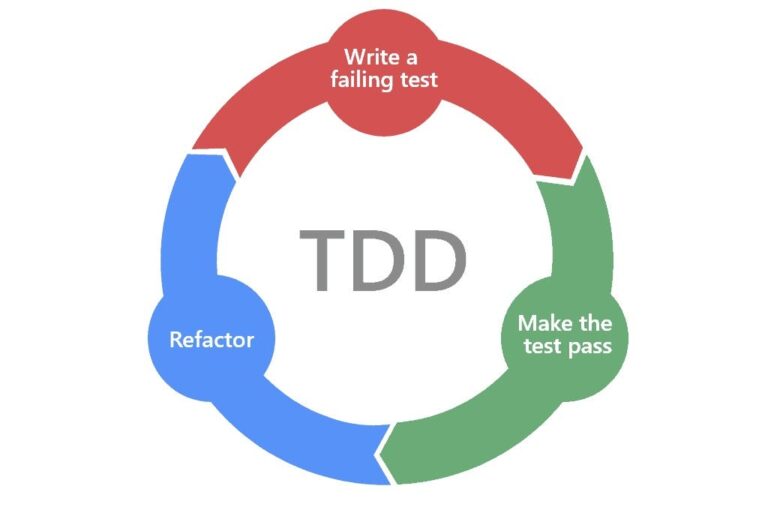It is essential to deliver applications quickly, reliably, and efficiently in the dynamic world of software development. A key component of the DevOps methodology is the Continuous Integration and Continuous Delivery/Deployment (CI/CD) pipelines. By automating procedures, reducing human error, and accelerating the transition from code to production, CI/CD pipelines revolutionize the software development lifecycle. In this in-depth investigation, we delve into the world of CI/CD pipelines, exploring their tenets, advantages, best practices, and crucial functions in advancing DevOps effectiveness.
What is a CI/CD pipeline?
A pipeline is a procedure, also known as CI/CD, that directs software development along a path of building, testing, and deploying code. The goal of automating the procedure is to reduce human error and keep the software release process consistent. The pipeline may contain tools for code compilation, unit testing, code analysis, security, and binary creation. This pipeline would also include packaging the code into a container image for deployment across a hybrid cloud in containerized environments.
A DevOps methodology’s foundation is CI/CD, which unites teams from IT operations and development to deploy software. The speed at which code can be released has evolved into a competitive differentiator as custom applications become essential to how businesses differentiate themselves.

Understanding CI/CD Pipelines
The foundation of CI/CD pipelines is made up of two interconnected practices called Continuous Integration (CI) and Continuous Delivery/Deployment (CD). These procedures are intended to accelerate and automate various phases of the software development lifecycle, from the writing of the code to the release of the finished product.
- (CI) Continuous Integration: The idea behind continuous integration is to frequently integrate code changes into a shared repository. In order to ensure that new code seamlessly integrates with the existing codebase, developers submit their code changes several times per day. CI relies heavily on automated tests to make sure that changes don’t cause regressions or defects.
- (CD) Continuous Delivery: By automating the process of releasing software to production or staging environments, continuous delivery expands on CI. Code alterations are automatically prepared for deployment once they successfully integrate and pass automated tests. This includes activities like environment setup, configuration, and packaging.
- Permanent Deployment: By automatically deploying code changes to production environments after they pass the automated tests, continuous deployment expands upon automation. By minimizing human involvement, this strategy speeds up the delivery of features to end users.

Continuous Deployment VS Continuous Delivery
Continuous delivery rather than continuous deployment is typically meant when the terms CI and CD are used. Continuous delivery is the process of automatically pushing code updates into the “dev” and “test” (staging) environments so that the development team can review the product increment and QA testers can conduct their tests, as described in the previous section.
Code updates that go beyond continuous delivery are routinely and automatically deployed to the production environment, known as continuous deployment. Continuous delivery differs from continuous deployment in that it requires a manual approval process before going into production. Production is automated by continuous deployment, which also does away with the need for explicit approval.

The CI/CD Pipelines Structure
Structured processes known as CI/CD pipelines help move code from development to production. They consist of a number of stages, each of which corresponds to a stage in the delivery of software. Following is a list of the major steps in a typical CI/CD pipeline:
- Creation of Code: Code is created by developers, who then submit their updates to version control programs like Git. The CI/CD pipeline begins as a result of these modifications.
- Continuous Integration: Code changes are automatically incorporated into the shared code repository during the CI stage. To make sure the code is functional and adheres to the necessary standards, automated tests such as unit tests, integration tests, and code quality checks are run.
- Built Automatically: The code is automatically incorporated into deployable artifacts after passing the CI stage. Compiled code, binaries, libraries, and other deployment-related artifacts may be among them.
- Automated Evaluation: The built artifacts go through additional automated testing at this stage, including performance, security, and user acceptance testing. These tests confirm that the deployed version of the code changes is correct.
- Delivering and deploying continuously: Depending on the organization’s deployment strategy, the validated artifacts are automatically deployed during the CD stage to either a staging environment or a production environment. Continuous Deployment automates the process without requiring manual intervention, whereas Continuous Delivery requires manual approval prior to deployment.
- Observation and Reaction: After it is released, the application is continually checked for performance indicators, problems, and user feedback. The monitoring-derived insights are applied to the application’s further optimization.
- Rollbacks and Recovery: The CI/CD pipeline should allow for easy rollbacks to the previous version in the event that errors or problems are found in the production environment. Users and business operations are kept as little as possible out of commission.

CI/CD Pipelines’ Advantages
A wide range of advantages that promote effectiveness, quality, and cooperation among software development teams are provided by CI/CD pipelines:
- Automate boring work: First, rather than investing in repetitive, redundant testing tasks, business resources are used in other, more important areas. The complexity and production costs of repeatable tests are significantly decreased when the process is automated and streamlined in a pipeline.
- Help developers stay focused: Developers can concentrate on writing code, which is what they do best, thanks to the CI/CD pipeline. Without it, developers must manage a variety of tasks, which takes time and diverts them from their main tasks. These tasks range from environment setup, build creation, issue investigation, and even product delivery.
- Easier test log archiving: maintains logs of all testing, deployments, and code changes so that team members can review them whenever they want. With a simple push of a button, it also enables reverting to earlier versions.
- Quick product updates: Product updates become much less stressful for the development team when the release process is streamlined in the CI/CD process.
- Improve time-to-market: One of the crucial factors that determines the success of your product release is the timing of the deployment. A timely deployment supports pricing, increases revenue, improves customer engagement, and advances market objectives for your company. The ROI of the product will rise significantly with the right timing for marketing.
- Improved coding standards: The CI/CD pipeline offers a workflow that enables developers to share their codes with team members and integrate them more frequently in order to prevent potential conflicts in upcoming builds. This will eventually increase the code quality for all updates and lower the cost of fixing bugs.

Implementing the CI/CD Pipeline
The DevOps methodology is now used by the majority of development teams, but there is no one way to implement CI/CD because most teams customize the software automation to meet their unique needs and interests. The key to successful CI/CD is to employ the right automation techniques and tools. The best methods must be chosen by developers, who must decide how to coordinate changes.
Through the use of a combination of version control, build, test, orchestration, and configuration management tools, teams should integrate CI/CD into the SDLC process.
- Version Control: The development team works on the code in centralized repositories using version control tools like Git. Every change is recorded by a version control system (VCS), which also makes it simple to go back if something goes wrong. Additionally, it allows teams to manage testing, infrastructure, and other components as versioned artifacts by supporting configuration as code.
- Build: CI build tools assemble files into deployable components. CD tools deliver artifacts to the operations team for additional testing and preparation after passing unit test checks.
- Test: Testing is a critical component of any CI/CD workflow. Adoption of CI/CD is made easier by automation. To ensure that the developer receives feedback as soon as possible, tests must be completed as quickly as is practical. This makes it possible to find bugs early on. A more accurate and bug-free application is the end result. Only test suite automation will make this all possible.
- Configuration Management: Software configuration management is a subset of the broader, multidisciplinary field of configuration management and involves the task of monitoring and controlling changes to software in software engineering. Version control, CI/CD pipelines, and configuration management are frequently used in tandem.
Challenges and Things to Think About
Although CI/CD pipelines have many benefits, organizations may face difficulties when implementing them.
- Legacy Systems and Processes: It can be challenging to integrate CI/CD practices into legacy systems and procedures. The adaptability and automation needed for seamless pipelines may be lacking in legacy systems.
- Cultural Evolution: A cultural shift toward cooperation, openness, and continuous improvement is necessary for CI/CD adoption. Progress can be hampered by resistance to change and preexisting procedures.
- Tooling and Integration: It’s critical to choose the appropriate tools for deployment, testing, and automation. It can be difficult to guarantee seamless tool integration.
- Skills and Training: Teams must learn new techniques for deployment, testing, scripting, and automation. Adoption success depends on making an investment in education and skill development.
The core of DevOps efficiency is CI/CD pipelines, which have revolutionized the software development lifecycle and allowed businesses to deliver high-quality applications more quickly and consistently. These pipelines improve communication between the development, testing, and operations teams while automating procedures and minimizing errors. Despite difficulties, following best practices and principles ensures CI/CD pipeline implementation success. CI/CD pipelines will continue to be essential in fostering innovation, scalability, and the delivery of cutting-edge applications to end users as technology develops. CI/CD pipelines are the engine that pushes organizations toward DevOps success and digital excellence in a world where speed, quality, and collaboration are crucial.








